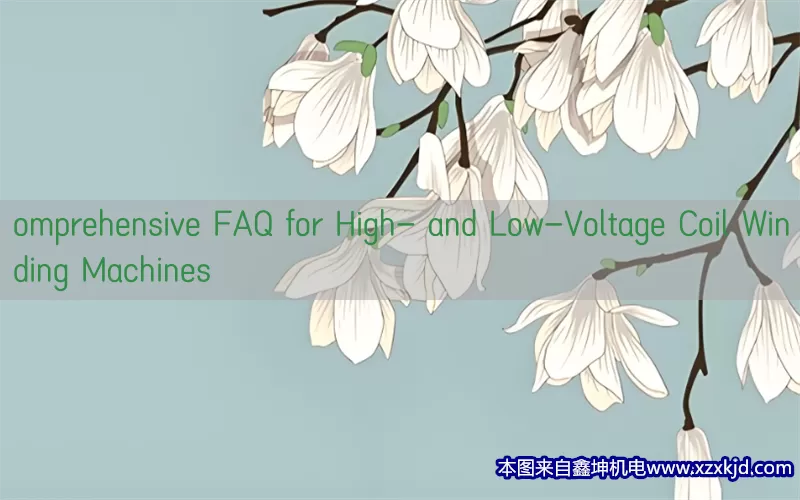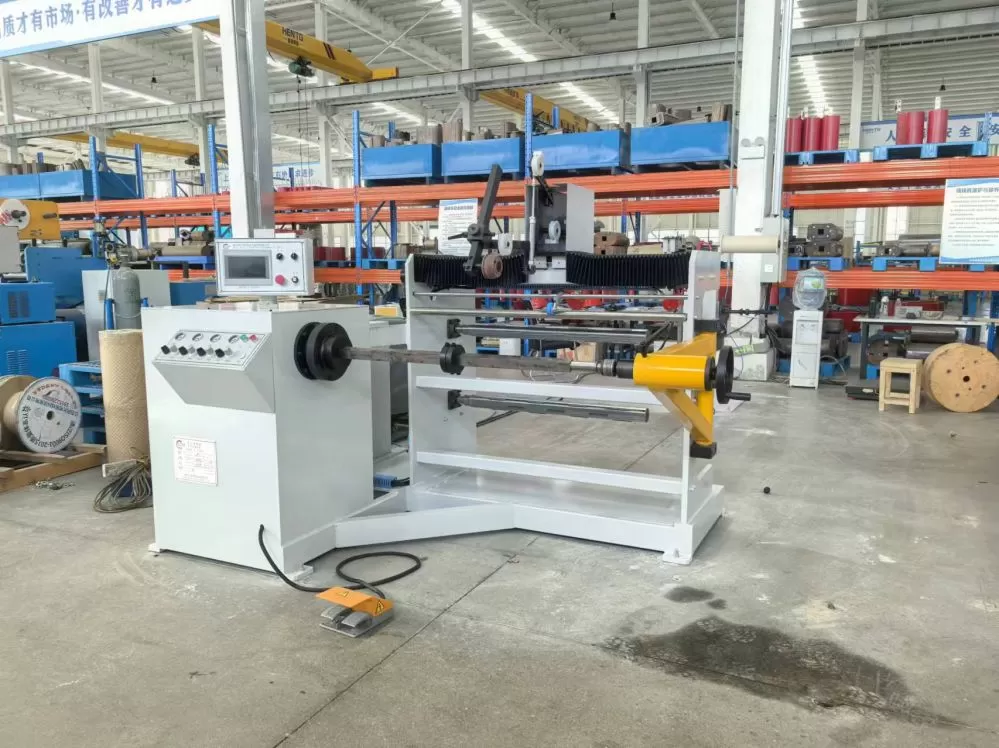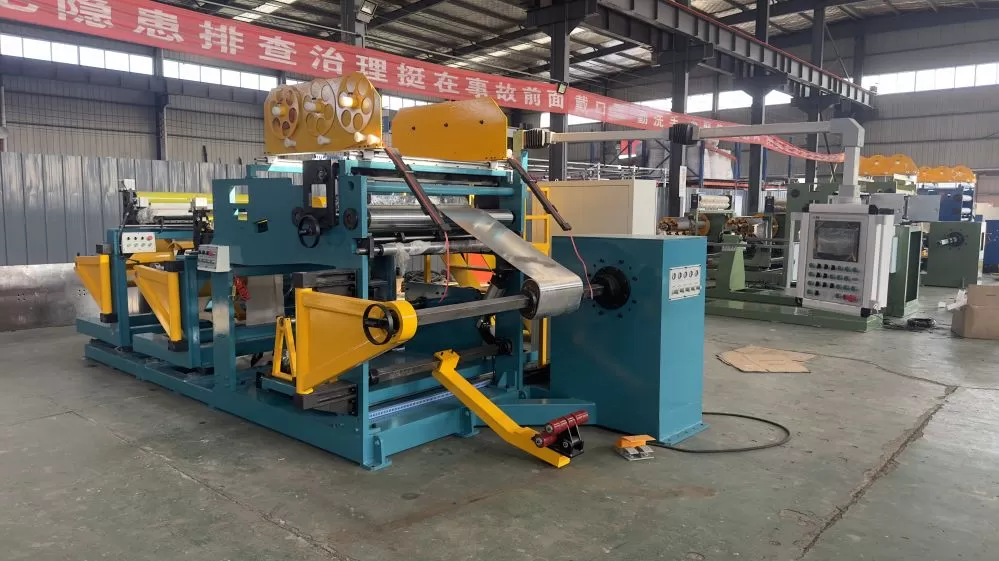omprehensive FAQ for High- and Low-Voltage Coil Winding Machines
Understanding High- and Low-Voltage Coil Winding Machines

High- and low-voltage coil winding machines are essential in industries ranging from automotive to electronics, helping to create inductors, transformers, and motors. However, like any precision equipment, they come with their own set of challenges. Here, we dive into frequently asked questions to help users better understand and optimize their winding machines.
1. What are the primary differences between high- and low-voltage winding machines?
High-voltage winding machines are engineered to handle larger, more complex coils that require enhanced insulation and precise winding capabilities. These machines focus on creating coils for applications such as power transformers and large motors, where durability and resistance to voltage spikes are crucial. Low-voltage winding machines, however, are designed for coils used in applications with lower voltage requirements, such as household appliances or smaller electronics. They focus on smaller coils, often in higher quantities, and emphasize speed and efficiency over heavy-duty performance.
2. How do I select the right winding machine for my needs?
Choosing the right machine depends on several factors, including voltage requirements, production volume, wire gauge, and coil size. If you're producing high-voltage coils, invest in a machine designed to handle thicker wire gauges and provide robust insulation options. For mass production of smaller, low-voltage coils, look for machines with high speed, precision, and automated controls to maximize productivity. It's essential to assess your specific requirements thoroughly and, if possible, consult with machine manufacturers to ensure your choice aligns with your production needs.
3. What common issues arise with winding machines, and how can they be resolved?
Winding machines, like any machinery, encounter issues over time. Common problems include misalignment, inconsistent winding tension, wire breakage, and mechanical wear.
Misalignment: Misalignment typically occurs due to incorrect machine settings or mechanical strain. To address this, calibrate the machine regularly and check alignment before every production run.
Inconsistent Tension: This issue often results from worn tensioners or improper wire feeding. Regularly inspect tension components and replace them as needed.
Wire Breakage: Frequent wire breakage is usually due to incorrect tension or poor quality wire. Adjust the tension and ensure you're using high-grade, appropriate wire for your winding requirements.
Mechanical Wear: Parts like bearings and rollers experience wear over time, impacting machine performance. Regular maintenance, including lubrication and timely replacement of worn parts, can extend machine life and maintain optimal function.
4. What is the importance of tension control in coil winding?
Tension control is crucial for ensuring consistent and high-quality winding. Inadequate tension may cause loose coils, while excessive tension can lead to wire breakage or uneven layering. Modern winding machines are often equipped with advanced tension control systems that adjust dynamically based on wire gauge and speed, allowing operators to maintain precise control and produce uniform coils. Proper tension management not only enhances coil quality but also extends the lifespan of the winding machine and reduces production costs.
Optimizing Performance and Maintenance of Coil Winding Machines
Maintaining and optimizing a coil winding machine requires regular attention to detail, understanding the specific machine's mechanics, and leveraging best practices to improve productivity. Here, we continue to answer more common questions and offer tips to help users get the most from their equipment.
5. How often should maintenance be performed on a winding machine?
The maintenance frequency depends on usage levels and machine type, but as a general rule, coil winding machines should undergo maintenance every three to six months. High-usage machines, especially those handling high-voltage coils, may require more frequent inspections. Maintenance involves cleaning, lubricating, inspecting for wear, and recalibrating components as necessary. Preventive maintenance not only prevents unexpected downtimes but also extends the machine’s lifespan, improving overall productivity and cost-efficiency.
6. Can winding machines be upgraded for higher efficiency?
Yes, many winding machines can be upgraded to improve efficiency and meet changing production requirements. Common upgrades include adding advanced controllers for better precision, retrofitting older machines with digital tension systems, or incorporating automated feeding systems to enhance speed. Many manufacturers offer upgrade kits or modifications tailored to specific needs. Consulting with the machine's original manufacturer can ensure that upgrades are compatible with the existing system and won’t interfere with functionality.
7. What safety precautions are necessary when operating a winding machine?
Safety is critical in coil winding operations, especially when working with high-voltage machines. Key precautions include:
Proper Training: Ensure that all operators are trained on both the machine and safety protocols.
Protective Gear: Operators should wear appropriate protective equipment, such as gloves and eye protection, to avoid injuries from moving parts or wire spools.
Emergency Stops: Familiarize operators with the machine's emergency stop functions and ensure they are accessible at all times.
Routine Checks: Regularly check safety features like emergency stops and safety shields to ensure they’re functional.
These safety steps help reduce accidents, protect operators, and maintain a safe, productive work environment.
8. What are some best practices for maximizing coil winding quality?
Maximizing coil quality relies on maintaining consistent settings and proper machine maintenance. Here are a few best practices:
Calibration: Frequently calibrate machines to avoid minor deviations that can lead to defective coils.
Quality Wire: Use high-quality wire to avoid inconsistencies and breakage.
Environmental Control: Temperature and humidity can affect coil quality. Keep the workspace stable to prevent fluctuations in winding quality.
Training and Documentation: Provide operators with detailed training on machine operation and maintenance. Documenting processes can help ensure consistency and maintain high standards.
By adopting these practices, operators can achieve high-quality results, reducing waste and boosting overall productivity.
.1. Conclusion
High- and low-voltage coil winding machines are pivotal to numerous industries. By understanding their unique characteristics, potential issues, and best maintenance practices, operators can enhance performance, reduce downtimes, and extend the lifespan of these complex machines. Whether you're troubleshooting, upgrading, or performing routine maintenance, a proactive approach is the key to mastering coil winding machine operations.
英雄不问出处,文章要问来源于何处。
提示:在享受本文内容的同时,请注意版权归属 徐州鑫坤机电设备有限公司https://www.xzxkjd.com如果您觉得有价值欢迎分享,但请务必注明出处,感谢您的理解,谢谢!
以下部分内容需要登录查看 立即登录
相关内容
- 供需裂口持续扩大:2025年铜价暴涨,产业链如何应对?
- 铜,新时代的“石油”?2025年价格狂飙背后的战略博弈
- 从能源革命到智能时代:2025铜价暴涨背后的全球新逻辑
- 铜价创历史新高!绿色转型与供需失衡背后的财富浪潮
- 2025铜价为何一飞冲天?三大核心驱动力深度解析
- 上海非急救出租服务全解析
- 深耕中考复读赛道 深圳深才教育为复读生搭建升学桥梁
- 阳光下的童年:那些被温暖照亮的纯真时光
- 群晖DSM7.0-7.21监控套件Surveillance Station 9.20-11289开心版60个许可证设置教程(无重启、无断流、无卡死、史上最完美)
- 云服务器+SD-WAN组网和域名DNS解析
- 在云主机上安装iKuai OS,实现SD-WAN组网,利用云主机80;443端口搭建企业网站。个人博客。让云主机当做你的堡垒机,实现数据本地化。
- 中央空调只开一台=全开耗电?真相让人意外!
 简体中文
简体中文 繁體中文
繁體中文 English
English Nederlands
Nederlands Français
Français Русский язык
Русский язык Polski
Polski 日本語
日本語 ภาษาไทย
ภาษาไทย Deutsch
Deutsch Português
Português español
español Italiano
Italiano 한어
한어 Suomalainen
Suomalainen Gaeilge
Gaeilge dansk
dansk Tiếng Việt
Tiếng Việt Pilipino
Pilipino Ελληνικά
Ελληνικά Maori
Maori tongan
tongan ᐃᓄᒃᑎᑐᑦ
ᐃᓄᒃᑎᑐᑦ ଓଡିଆ
ଓଡିଆ Malagasy
Malagasy Norge
Norge bosanski
bosanski नेपालीName
नेपालीName čeština
čeština فارسی
فارسی हिंदी
हिंदी Kiswahili
Kiswahili ÍslandName
ÍslandName ગુજરાતી
ગુજરાતી Slovenská
Slovenská היברית
היברית ಕನ್ನಡ್Name
ಕನ್ನಡ್Name Magyar
Magyar தாமில்
தாமில் بالعربية
بالعربية বাংলা
বাংলা Azərbaycan
Azərbaycan lifiava
lifiava IndonesiaName
IndonesiaName Lietuva
Lietuva Malti
Malti català
català latviešu
latviešu УкраїнськаName
УкраїнськаName Cymraeg
Cymraeg ກະຣຸນາ
ກະຣຸນາ తెలుగుQFontDatabase
తెలుగుQFontDatabase Română
Română Kreyòl ayisyen
Kreyòl ayisyen Svenska
Svenska հայերեն
հայերեն ဗာရမ်
ဗာရမ် پښتوName
پښتوName Kurdî
Kurdî Türkçe
Türkçe български
български Malay
Malay मराठीName
मराठीName eesti keel
eesti keel മലമാലം
മലമാലം slovenščina
slovenščina اوردو
اوردو አማርኛ
አማርኛ ਪੰਜਾਬੀName
ਪੰਜਾਬੀName albanian
albanian Hrvatski
Hrvatski Suid-Afrikaanse Dutch taal
Suid-Afrikaanse Dutch taal ខ្មែរKCharselect unicode block name
ខ្មែរKCharselect unicode block name




